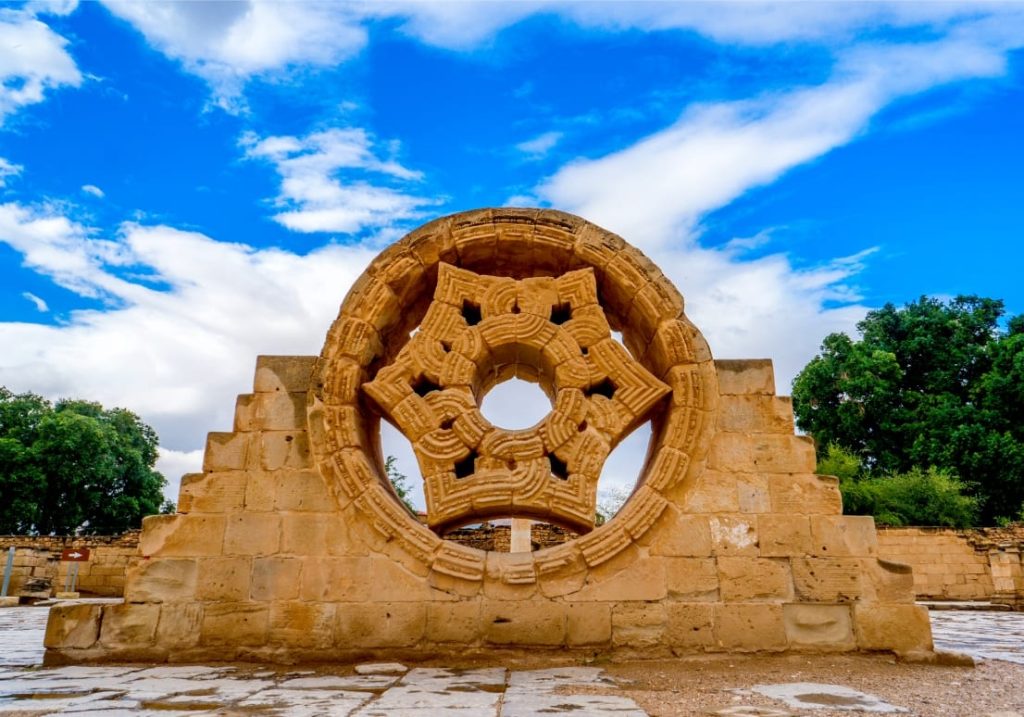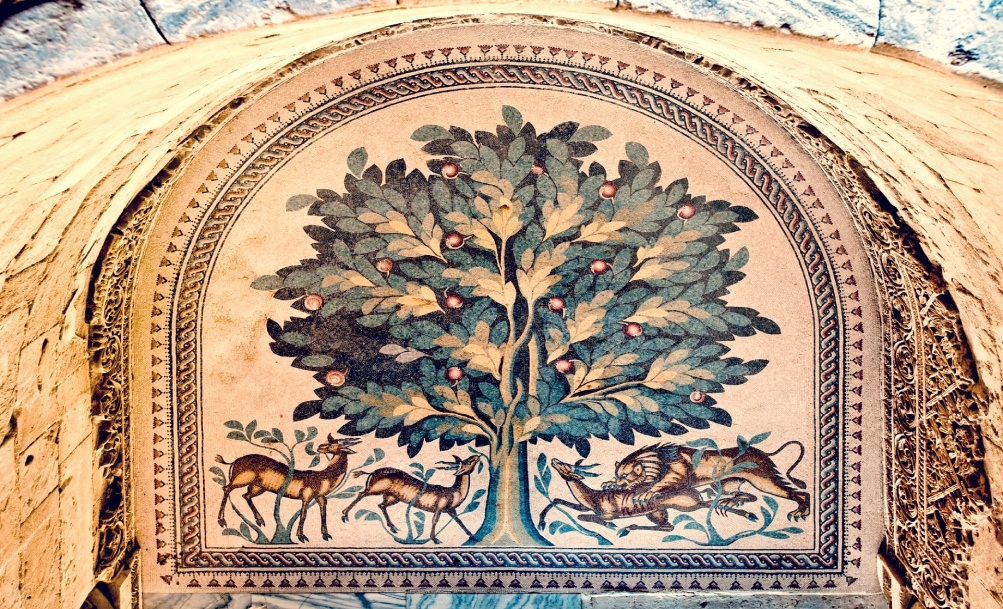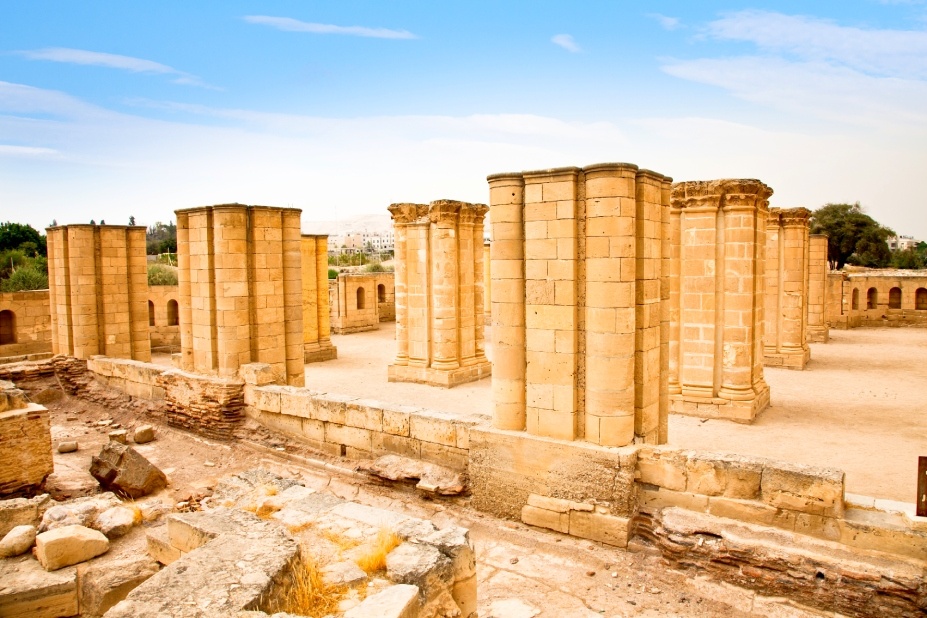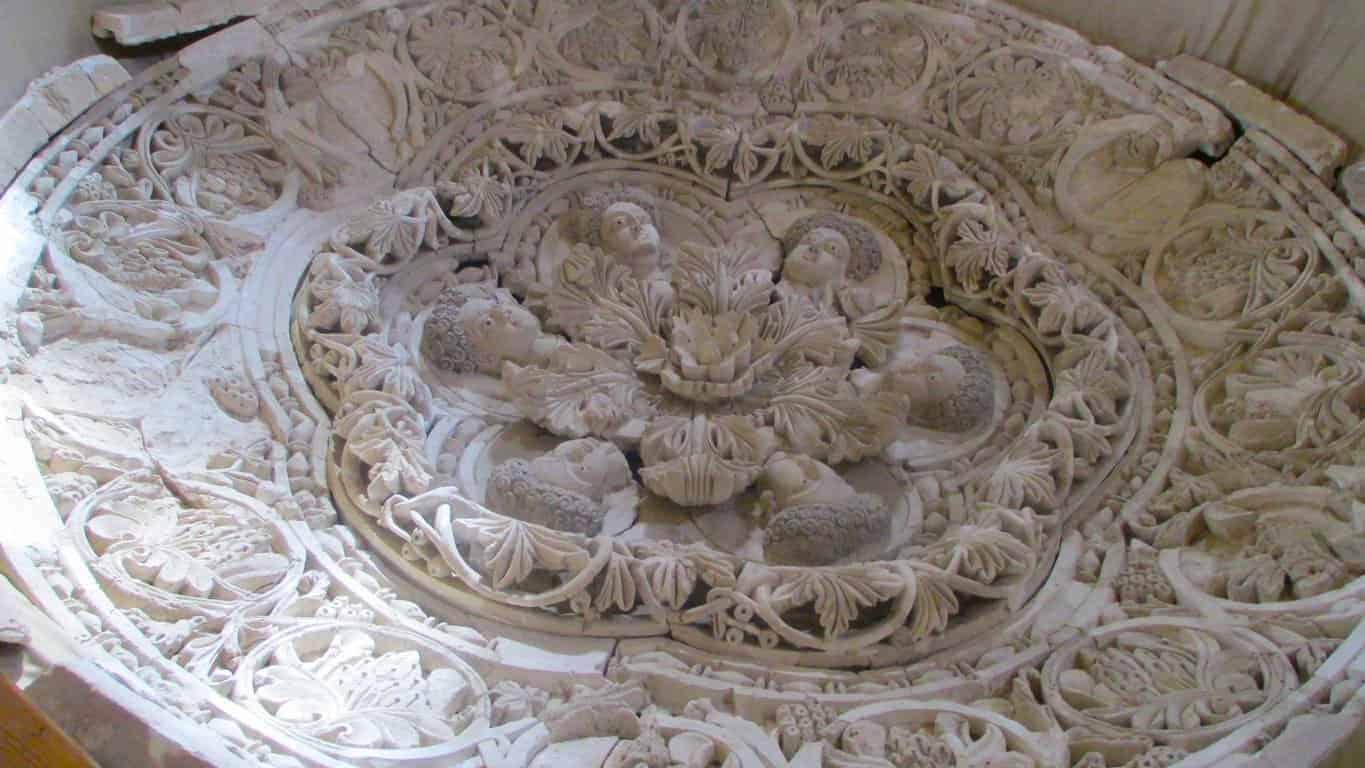Nestled in the historic city of Jericho in the West Bank, Hisham’s Palace (Qasr Hisham) is a remarkable testament to the grandeur of early Islamic architecture and the region’s rich cultural heritage. With its stunning mosaics and captivating history, this ancient palace beckons travelers and history enthusiasts to explore its enchanting remains.

A Glimpse into the Past
Hisham’s Palace dates back to the early 8th century during the Umayyad Caliphate, a period of great cultural and architectural significance in the Islamic world. It was commissioned during the reign of Caliph Hisham ibn Abd al-Malik, whose name it carries. The palace served as a symbol of Umayyad power and sophistication.
Architectural Grandeur
The architectural design of Hisham’s Palace is a testament to the creative genius of its time. The palace’s layout is characterized by a central courtyard surrounded by living quarters, administrative buildings, and ornate gardens. It was a harmonious blend of Islamic architectural elements and Roman influences.
Majestic Mosaics
What truly sets Hisham’s Palace apart are its exquisite mosaics. These intricate artworks, renowned for their beauty and complexity, cover large portions of the palace’s floors. The mosaics depict various subjects, from geometric patterns and floral motifs to animals and hunting scenes. Among the most famous is the “Tree of Life” mosaic, an intricate representation of an iconic motif in Islamic art.
The Mystery of the Missing Dome
One of the palace’s most fascinating features is its central dome, which, if completed, would have been an architectural marvel. However, the crown was never finished, and its abandonment remains a mystery. Some suggest it might have been due to political instability or financial constraints.

Rediscovery and Preservation
Hisham’s Palace lay hidden beneath the sands of time for centuries until its rediscovery in the early 20th century. Today, it stands as a testament to the enduring legacy of Islamic art and architecture. Archaeological efforts have uncovered and preserved its mosaic floors, offering visitors a chance to walk in the footsteps of history.
Bethlehem & Jericho Tour

Visiting Hisham’s Palace
Exploring Hisham’s Palace is like embarking on a journey back in time. As you wander through its courtyards and admire the breathtaking mosaics, you can’t help but feel a deep connection to the past. The site also offers panoramic views of the surrounding landscape, including the city of Jericho and the Jordan Valley.
Rockefeller Archaeological Museum

Credit: Dr. Avishai Teicher Pikiwiki Israel, CC BY 2.5, via Wikimedia Commons.
A Window into Early Islamic Civilization
Hisham’s Palace is not just a physical structure; it’s a window into the flourishing civilization of early Islam. It reflects the artistic, architectural, and cultural achievements of the Umayyad dynasty, providing valuable insights into the region’s history.
Visiting Hisham’s Palace in Jericho is an opportunity to immerse yourself in the beauty and history of the Islamic Golden Age. It’s a chance to marvel at ancient artisans’ craftsmanship and appreciate the enduring legacy of a bygone era. So, if you find yourself in the West Bank, don’t miss the chance to explore this hidden gem and witness the grandeur of Hisham’s Palace.







